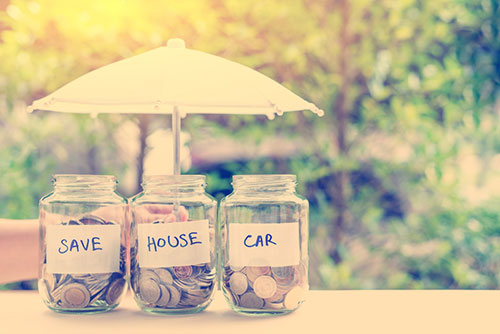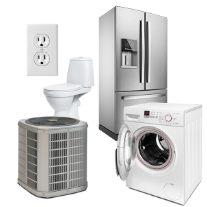We’ve talked about why every homeowner needs an emergency fund, and now we’ll share some tips and tricks that will help you accomplish this important goal.
When you’re just starting your fund, building up a cache of cash in an emergency fund that equals 1 to 3 percent of your home’s value and a dire emergency fund that adds up to 20 percent of your mortgage balance, at a minimum, can seem daunting and might even feel impossible. But take heart, there’s hope.
Know what you spend
The first step to building up your emergency fund(s) is knowing what you spend each month on expenses. Factor in those expenses that never change, or are fixed, such as your mortgage, insurance and child care payments, as well as those expenses that vary, such as debt and credit card payments, taxes, transportation and living expenses (groceries, personal items, etc.)
Once you have a road map of what you have to spend each month, you’ll know how much of your income you can start saving.
Start small and build gradually
Building up to the ideal amount in your emergency fund(s) will take time. Open a savings account and start making regular deposits. Set a schedule for those deposits and stick to it. Once the schedule is a habit, it will be automatic to set an amount aside at the same time and won’t feel like a burden.
Even if you look at your income and expenses and it seems impossible, you can find ways to save. Start small, with as little as $10 a week, by skipping a few morning lattes or a few lunches out. Once it begins to feel like you’re not missing the money, up the amount. Then up it again when you get used to the money not being there. By easing in gradually, you can work up to a significant savings contribution without it feeling like a painful hit to your wallet or lifestyle.
To make it easier, you can set up automatic transfers into a savings account as soon as your paycheck is deposited.
Use the right account
When you’re just starting your fund, a savings account at your local bank or credit union is a good choice because it is easy to access and you won’t be penalized when you need to withdraw funds. After the balance grows, you can start exploring options to help your money grow. Find an account that earns reasonable interest and let your money work for you.
In a post at Realtor.com in which he advises setting up a dire emergency fund that equals 20 percent of your mortgage balance, Robert Reed, a partner at Partnership Financial in Columbus, Ohio, advises against using a brokerage account since those accounts are subject to fluctuations. Better options are money market or savings accounts and short-term CDs.
A bill you pay yourself
Experts advise treating your contributions to your emergency fund(s) like a bill, thus it must be paid every month no matter how badly you want those concert tickets or new shoes. A great way to look at it is you’re paying a bill to yourself.
Only for emergencies
Key to making it work is a solid budget that leaves you enough to cover your expenses so you don’t have to dip into the fund for day-to-day needs. It’s an emergency fund, so you need to make sure it will be there for emergencies.








